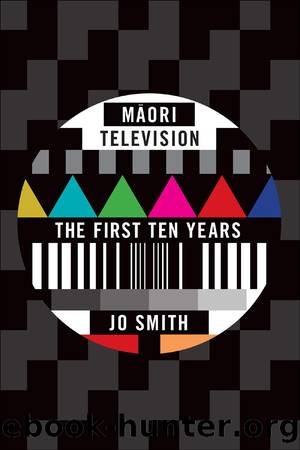Maori Television by Jo Smith

Author:Jo Smith
Language: eng
Format: epub
Publisher: Auckland University Press
Published: 2016-10-15T00:00:00+00:00
MÄori Televisionâs contribution to cultural knowledge
According to focus group kÅrero, MÄori Televisionâs educative potential is not restricted to language learning. KÅrero suggests that MÄori Television acts as a conveyor of cultural knowledge, as an archive of material important for future generations, and as a site of authority on matters concerning MÄori. When asked, âWhat does MÄori Television teach you?â one participant replied:
Well almost everything on [MÄori Television] is teaching you something. Whether itâs supposed to be or itâs indirectly. So on the Te Reo channel they play re-runs of Waka Huia from back in the day, and thereâs always something of interest on that. So the last one I watched on there . . . it was the history of Te Matatini and it was . . . I never knew half of that stuff. Whenever I watch Wairua I learn about a whole different way of looking at the world because thatâs what that showâs about. On PÅ«kana I always pick up new colloquialisms, new words, heaps of little things like that.
These comments underscore MÄori Televisionâs role as an important source of te reo and tikanga MÄori content, providing contemporary audiences with kÅrero, faces and activities from the past. MÄori Televisionâs re-runs of the long-standing Waka Huia also makes the organisation the kaitiaki of an existing taonga, the voices and perspectives documented by this long-running programme. Waka Huia also provides historical background to contemporary popular events such as Te Matatini. Wairua (featuring experts such as Patu Hohepa discussing the spiritual dimensions of te ao MÄori) provides knowledge and expertise difficult to access otherwise.
Another participant appreciated Iwi Anthems, because it offered a deeper understanding of the history surrounding certain waiata:
I like [Iwi Anthems] because it starts to make you understand that that waiata came from that area. It was Kahungunuâs turn last night. So yeah, we have those melodies in our own head that weâve heard when we were young and things like that, but to actually put a place to where they come from â itâs nice. And to see old kaumÄtua and kuia with grey hair standing on the stage singing.
This comment suggests that shows such as Iwi Anthems play an important role in not only honouring the skills, wisdom and mana of kaumÄtua and kuia, but also in deepening the existing knowledge of a participant who may know the words of a waiata but not the historical context.
This programming example also demonstrates MÄori Televisionâs additional role as producer or commissioner of contemporary MÄori programming, providing documentation of te ao MÄori today. In doing so, the network continues and extends the archive tradition set by Waka Huia. Such programming includes content unseen elsewhere, as one participant noted:
There was one [programme] on making fire and I think a TÅ«hoe guy on horseback going around showing which woods made fire â how to do it and how to keep it for weeks, and it was amazing. Iâd never seen anything quite like it. I think [televisionâs] a real good way of conveying some of that knowledge.
Download
This site does not store any files on its server. We only index and link to content provided by other sites. Please contact the content providers to delete copyright contents if any and email us, we'll remove relevant links or contents immediately.
| Direction & Production | Genres |
| Guides & Reviews | History & Criticism |
| Reference | Screenwriting |
| Shows |
Robin by Dave Itzkoff(2294)
Head of Drama by Sydney Newman(2229)
I'm Judging You by Luvvie Ajayi(2127)
The Paranormal 13 (13 free books featuring witches, vampires, werewolves, mermaids, psychics, Loki, time travel and more!) by unknow(2026)
Ten by Gretchen McNeil(1799)
Single State of Mind by Andi Dorfman(1738)
#MurderTrending by Gretchen McNeil(1587)
Key to the Sacred Pattern: The Untold Story of Rennes-le-Chateau by Henry Lincoln(1572)
Merv by Merv Griffin(1535)
Most Talkative by Andy Cohen(1519)
This Is Just My Face by Gabourey Sidibe(1400)
Notes from the Upside Down by Guy Adams(1392)
The Hunger Games: Official Illustrated Movie Companion by Egan Kate(1360)
Springfield Confidential by Mike Reiss(1334)
Jamie Oliver by Stafford Hildred(1332)
Clarkson--Look Who's Back by Gwen Russell(1279)
Binging with Babish by Andrew Rea(1273)
The TV Writer's Workbook: A Creative Approach To Television Scripts by Ellen Sandler(1270)
Blue Planet II by James Honeyborne & Mark Brownlow(1211)
